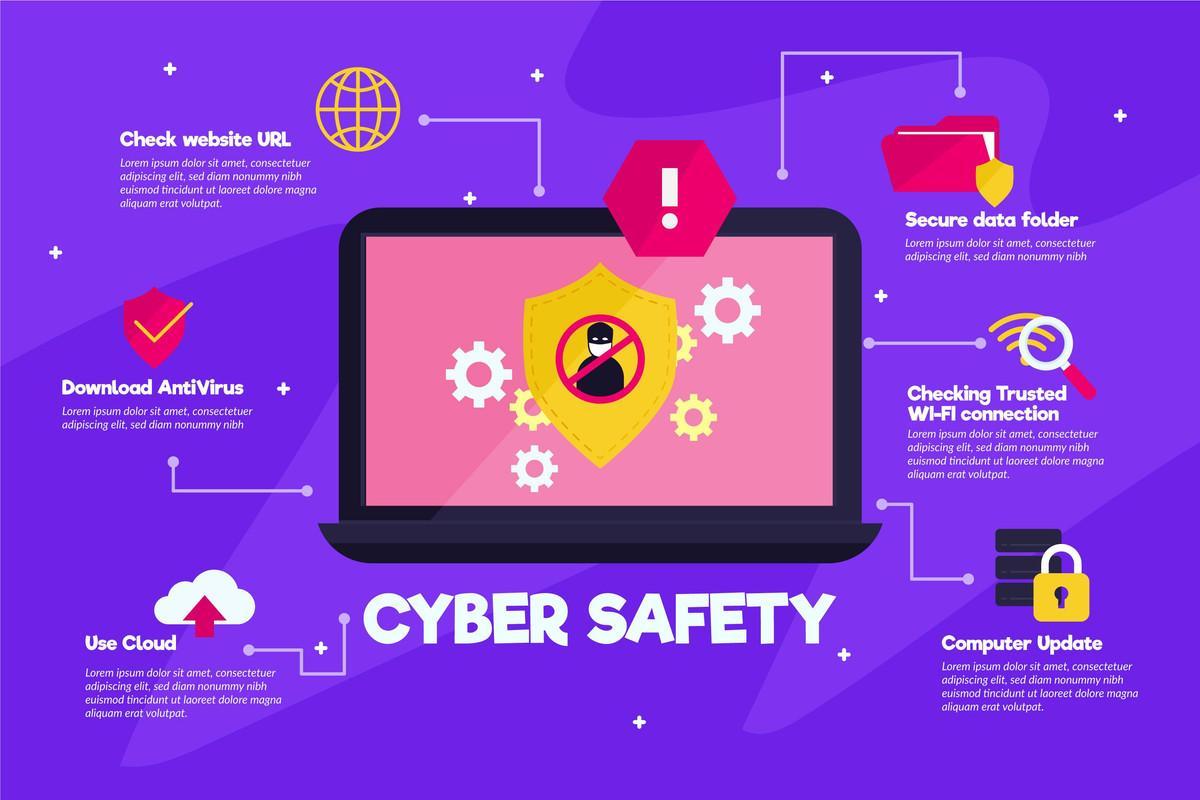The environment for cyber threats is constant and ever-changing. Every day, new vulnerabilities are discovered. Attacks are becoming more complicated and innovative, smoothly getting under the radar of conventional detection tools. The same is for the climate of companies – it isn’t constant either. Every time a business makes a change—whether it’s adding new network hardware, hiring new staff, working with new third-party vendors, etc.— added security is one of the top priorities required.
This requires cybersecurity to be a more controlled and managed process, where businesses can regularly assess, regulate, and track what’s working and what isn’t.
The Vulnerability
As part of your review process, you should be mandatorily conducting regular vulnerability assessments and penetration tests on your system from both an internal and external viewpoint.
A vulnerability scan is carried out on software to find vulnerable flaws without exploiting system weaknesses, but a penetration test is carried out to reap the benefits of the flaws and weaknesses.
This is the main distinction between the two types of testing. This ensures that any vulnerabilities found can be exploited maliciously. In order for you to select how to divide your security testing budget, let’s delve a little deeper into these subjects. You can choose the test that is best for you by breaking it down into its component parts. Continue reading to discover the main distinctions between assessment and pen testing highlighted in this article by BlueSteel Cybersecurity.
Penetration Testing
Penetration testing, sometimes known as “legal hacking,” is a testing technique used on software or web applications to find weak spots in their security. It can be viewed as a prototype of a legitimate cyberattack to find any flaws that, if ignored, could be abused by hackers.
A pen test’s main goal is to locate and get access to application flaws. Additionally, it can be used to evaluate a company’s security policies and attentiveness, or its capacity and protocols for identifying and responding to security threats. These reports are used by the IT team to make quick decisions and fix the problem as soon as feasible.
Vulnerability Assessment
Vulnerability scans are in-depth analyses of a program or operating system to find the flaws and vulnerabilities that could be deadly. The scan also determines the effectiveness of the safety measures after identifying and categorizing the potential threat inlets. The company’s IT department, a third-party security service provider, or an individual may conduct the scan independently. The goals and intent are the same in either case.
For instance, an Approved Scan Vendor is brought in as external security to scan the entire software network and verify the security of user information when a card payment system is set up or upgraded. Additionally, hackers use vulnerability scans to look for openings for entry points.
Elements Of Vulnerability Assessment vs Penetration Testing
The penetration testing instances that pertain to various scenarios are provided here. Examples of test cases include:
- Monitoring the inbound and outbound traffic carefully will allow you to confirm that any spam and unsolicited emails have been stopped. Spam email filters are already enabled by default in many email client services.
- Evaluating the proxy servers’ effectiveness in protecting the website’s network traffic. These servers make it difficult for nefarious intruders to get data from private networks.
- Determining whether a program can detect spam attempts on a website’s contact form.
- Re-examining the vulnerabilities that have been fixed to make sure you’re not vulnerable to the same dangers.
- Using software or hardware to completely protect the network and systems from anyone attempting to send out illicit data or gain anonymous access.
Several instances of vulnerability assessment entail:
- Forbidding the use of straightforward phrases like “user” or “admin” as credentials.
- Confirming whether the system or program is impenetrable to hacking using the “trial and error” method.
- Making sure error messages provide specific information rather than generalizations like “wrong email” or “wrong password.”
- Confirming that passwords should have at least 8 characters (including a number or a special keyboard case).
When Should Vulnerability Assessment Be Done?
To maintain a high degree of security, a vulnerability scan should ideally be carried out once per month. But it still depends on elements like the objectives of the security program, the formal criteria that must be met, and upgrades and adjustments. It’s best to do a vulnerability test and a pen test first after any system update or organizational changes. Any other loopholes are instantly closed in this manner.
Compliance regulations typically allow for an obligatory test to be conducted between one year and one month. Companies are frequently forced to conduct their tests every four months, and while this ensures that many problems will eventually be found, many may remain undetected for a considerable amount of time.
When To Go For Penetration Testing?
Pen tests should not be carried out only once. Since networks and applications are dynamic, pen testing should be done whenever there’s an update or new development process. Sometimes, companies perform penetration testing too soon, even before the prototype is ready to be sent down for production. Taking a pen test will simply lead to missing the problems that arise later because so many modifications are still likely to occur at the point of implementation.
This is only permitted if a subsequent pen test is carried out right before production. However, that is a waste of money because a final test can find all security flaws. The test should typically be run when there are no other core application changes to be made. This is only permitted if a subsequent pen test is carried out right before production. However, that is a waste of money because a final test can find all security flaws. Because they aim to maximize the speed of their investment returns from sales, the majority of businesses don’t follow this rule. Or maybe they are falling short of the timeline or their allocated budget. Pushing without the necessary security testing directly to production is still extremely hazardous even in that case.
Cost Comparison
For a good purpose, vulnerability scans are much less expensive than manual pen tests. Security professionals are examining your codebase for security misconfiguration and other issues, while on the one hand, you have an automated tool you can run whenever you like and get a strong report on. In terms of comparing vulnerability assessment with penetration testing, we’d say it’s an unfair category, but it’s still significant. While the price of web app pen-testing is roughly $400 per month, a good vulnerability assessment might run you anywhere from $100 to $200 per month. Cloud and mobile app penetration testing are typically significantly more expensive.
Risk Assessment
Vulnerability risk analysis is much more crucial than is often acknowledged. It enables you to emphasize the areas that require the greatest attention in regard to the allocation of resources and cleanup. You may get the CVSS scores used to determine the severity of each vulnerability from a vulnerability assessment report.
In this area, penetration testing clearly prevails. The pentester tries to take advantage of the flaws in your system. They are able to calculate how much access to sensitive assets a particular vulnerability may allow, how quickly and far a hacker might advance their privileges, and how much loss a particular exploit can cause.
Advantages of Penetration Testing
- With a specialist’s assistance, penetration testing can identify vulnerabilities and assess the actual threat they pose to applications. The tests are carried out just as a hacker would. Therefore, it may be impossible to implement some “high-level” risks.
- Maintaining your clients’ trust and ensuring that your business remains strong through routine penetration testing.
- You may better understand your cybersecurity strength by conducting penetration tests. In real-world situations and even during the test, the typical system security should be able to recognize threats and swiftly respond by cutting them off.
- Penetration testing identifies vulnerabilities in your system and makes attempts to exploit them. This includes even routine staff behavior that might lead to a strengthening of security.
- You receive a report on any gaps that were discovered at the end so you may take preventative action.
Advantages Of Vulnerability Assessment
- Automated tests and evaluations are simple to execute repeatedly and will generally cost less than a hacker assault would.
- You get an advantage by running a vulnerability scan before final production and release, finding any gaps before any hackers or cyberattacks compel you to.
- Frequent vulnerability testing ensures that your application complies with the General Data Protection Regulation’s requirements.
- You may determine the breadth and effectiveness of your security coverage on the application by regularly conducting vulnerability assessments.
- You would still need to uphold your ends by doing routine scans even if you had cyber insurance.
Tools
Automated diagnostic tools, which are commercial software programs, like Nessus, Qualys, or OpenVas are typically used to do vulnerability assessments. Most extensive pen tests are done manually (whereas a pen test’s reconnaissance stage frequently involves an automated vulnerability assessment). However, professional pen testers frequently create their own vulnerabilities as needed. Software packages for pen testing include Metasploit and CoreImpact.
Which Is Better For My Organization: Vulnerability Assessment or Penetration Testing?
In summary, both are essential parts of a process for managing threats and vulnerabilities, but in some circumstances, one may be more suitable than the other. An evaluation of vulnerabilities provides more breadth than depth. It identifies some of your flaws and explains how to strengthen them. When modifications are made to the network, vulnerability assessments can be used as a speedy evaluation and sanity assessment as well as for periodic testing in between penetration testing sessions. When a completely new vulnerability is disclosed, a focused vulnerability assessment can be performed to determine the organization’s exposure.
Vulnerability assessments could serve as the foundation of a cybersecurity program for organizations just beginning to think about cybersecurity or with an existing cybersecurity program that would like to gain a basic awareness of its current weaknesses.
A pen test, in contrast, favors depth over breadth. It informs you if someone can break in using one of your vulnerabilities and, if so, what data they can access. Corporations that are focused on compliance, are high-value threats, or have a developed, integrated cybersecurity program should use it. Pen tests should be carried out at least once a year if there are substantial changes to your surroundings.
Every organization operates differently, and each one has a distinct level of benefit from performing a penetration test. A penetration test may be useful in distinctive ways for various firms depending on how they manage IT security. There are some points of agreement that may be made, nevertheless, and these points almost definitely apply to every organization.
Can Vulnerability Assessment And Penetration Testing Be Performed Simultaneously?
You can, of course. The actual question is: Do you require it?
Vulnerability scanning is used for a thorough security assessment. Fast and inexpensive, although certain nuances are missed. As you are already aware, penetration testing is a more involved and expensive process that requires a lot of knowledge. It is a good idea to include pen-testing in your security regime when your company’s income increases and your web application becomes more intricate with more functionality.
It all boils down to financial analysis in the end. Partnering with a VAPT business that can do both automated vulnerability assessment and manual penetration testing is always a smart choice because it keeps the door open for escalation to a more thorough model of security testing.
The Bottom Line:
The ability to verify the security status of software both before and after it enters production is a benefit of performing penetration testing and vulnerability assessments. The dispute between vulnerability assessment and penetration testing has been the subject of various articles, and it undoubtedly won’t be the last. However, you can take this as a final opinion. We believe that you would have gathered thorough knowledge of the line separating Vulnerability assessment from Penetration testing as well as how they can work together to provide a comprehensive security audit of your systems.







